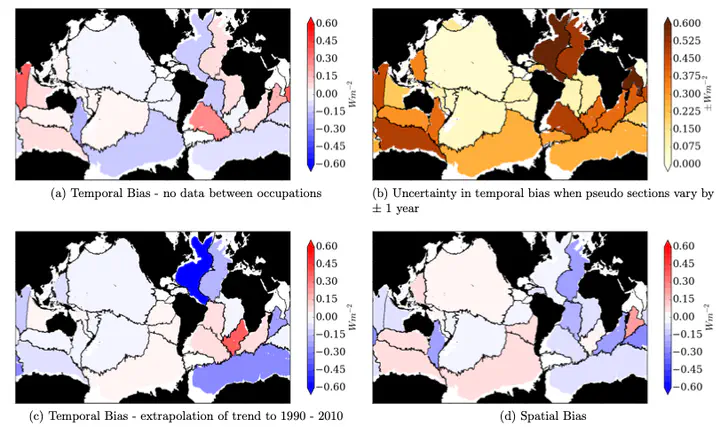Deep ocean heat content observing strategy: evaluating the past and preparing for the future

Abstract
Changes in full depth ocean heat content (OHC) serve as a key metric of climate change with accurate measurements vital to reduce uncertainties in other climate metrics such as the planetary energy imbalance and to improve global and re- gional sea level rise prediction. The below 2000 m ocean experiences low frequency sampling in time and space; over the last 30 years hydrographic ship transects were typically repeated every 5 - 10 years, covering a small fraction of the oceans. Uncertainties that exist in repeat hydrographic sampling are quantified here by deploying a pseudo hydrographic sampling array in high resolution ocean model output. Through comparison to the complete model output, this work presents an estimation of temporal and spatial biases that may exist in calculations of decadal OHC change below 2000 m from hydrographic sampling. In addition, longer times- cale changes in OHC and its spatial variations are revealed using centennial length simulations from four coupled climate models. The spatial structure and depth structure of OHC change are evaluated in anthropogenically unforced and forced scenarios to identify key regions and depths for future deep OHC observing. This work suggests that there may be significant biases in hydrographic sampling in the upper deep ocean such that during the period 1990 - 2010 only around a third to a half of the magnitude of the OHC warming trend was captured by hydrography between 2000 - 2700 m. Biases are much smaller below 3500 m, but still differ in magnitude regionally, with spatial and temporal biases dominating in different basins. On average 82% of the trend between 2000 m and the seafloor is captured by hydrographic style sampling. Past and future coupled climate model scenarios suggest that decadal ocean heat content change experiences the largest variations across the Southern and Atlantic Oceans. This work clearly motivates the deployment of a deep ocean observing strategy with higher temporal and spatial resolution than current hydrography, especially between 2000 - 4000 m, and with particularly high resolution sampling in the Southern and Atlantic Oceans.